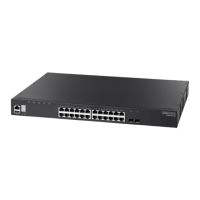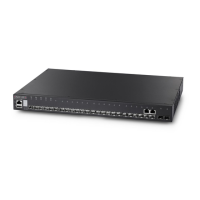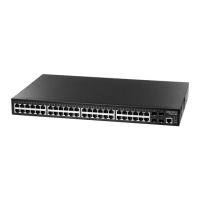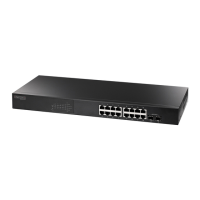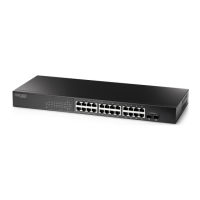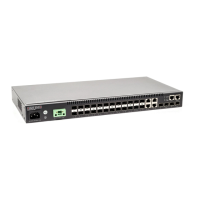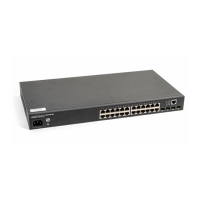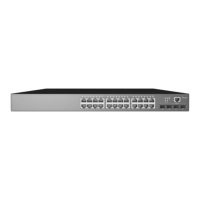Chapter 50
| IP Routing Commands
Open Shortest Path First (OSPFv2)
– 988 –
routes, the internal cost is only used as a tie-breaker if several Type 2 routes
have the same cost.
◆ This command should not be used to generate a default route for a stub or
NSSA. To generate a default route for these area types, use the area stub or area
nssa commands.
Example
This example assigns a metric of 20 to the default external route advertised into an
autonomous system, sending it as a Type 2 external metric.
Console(config-router)#default-information originate metric 20 metric-type 2
Console(config-router)#
Related Commands
ip route (958)
redistribute (1035)
router-id This command assigns a unique router ID for this device within the autonomous
system for the current OSPF process. Use the no form to use the default router
identification method (i.e., the highest interface address).
Syntax
router-id ip-address
no router-id
ip-address - Router ID formatted as an IPv4 address.
Command Mode
Router Configuration
Default Setting
Highest interface address
Command Usage
◆ This command sets the router ID for the OSPF process specified in the router
ospf command.
◆ The router ID must be unique for every router in the autonomous system. Using
the default setting based on the highest interface address ensures that each
router ID is unique. (Note that the router ID cannot be set to 255.255.255.255.)
◆ If this router already has registered neighbors, the new router ID will be used
when the router is rebooted, or manually restarted by entering the no router
ospf followed by the router ospf command.
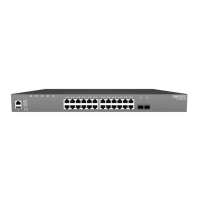
